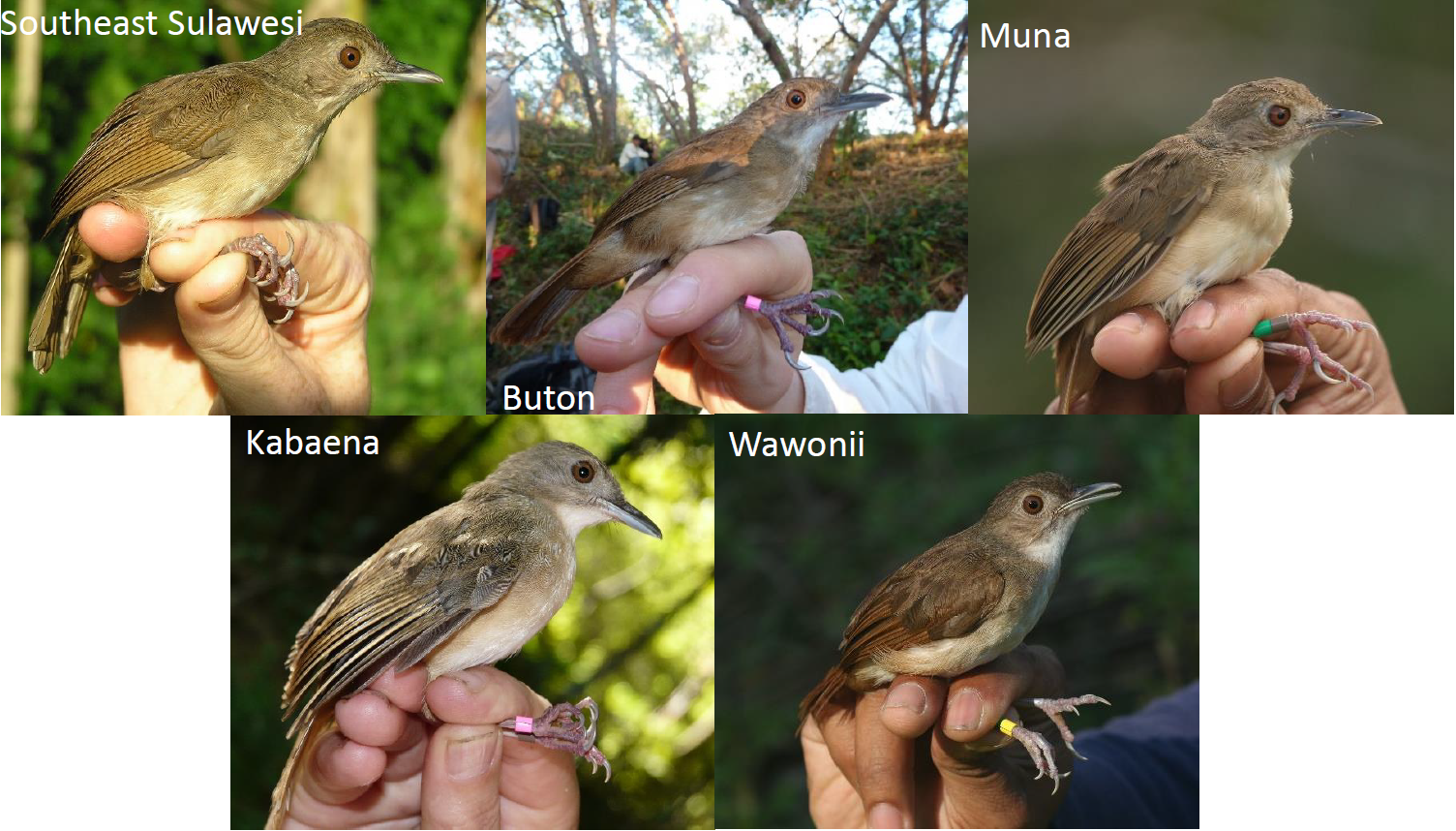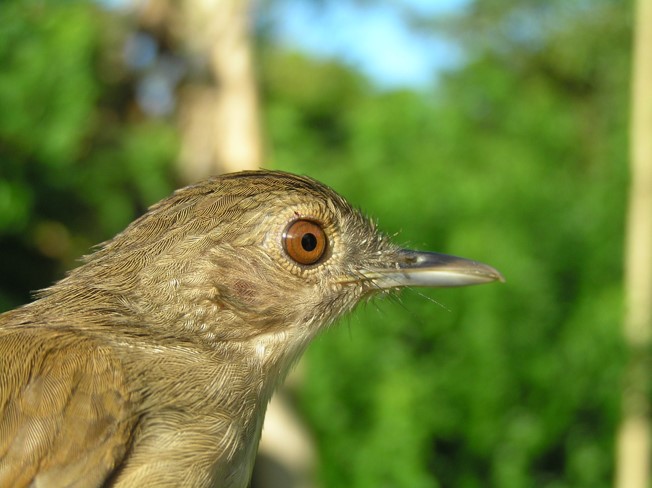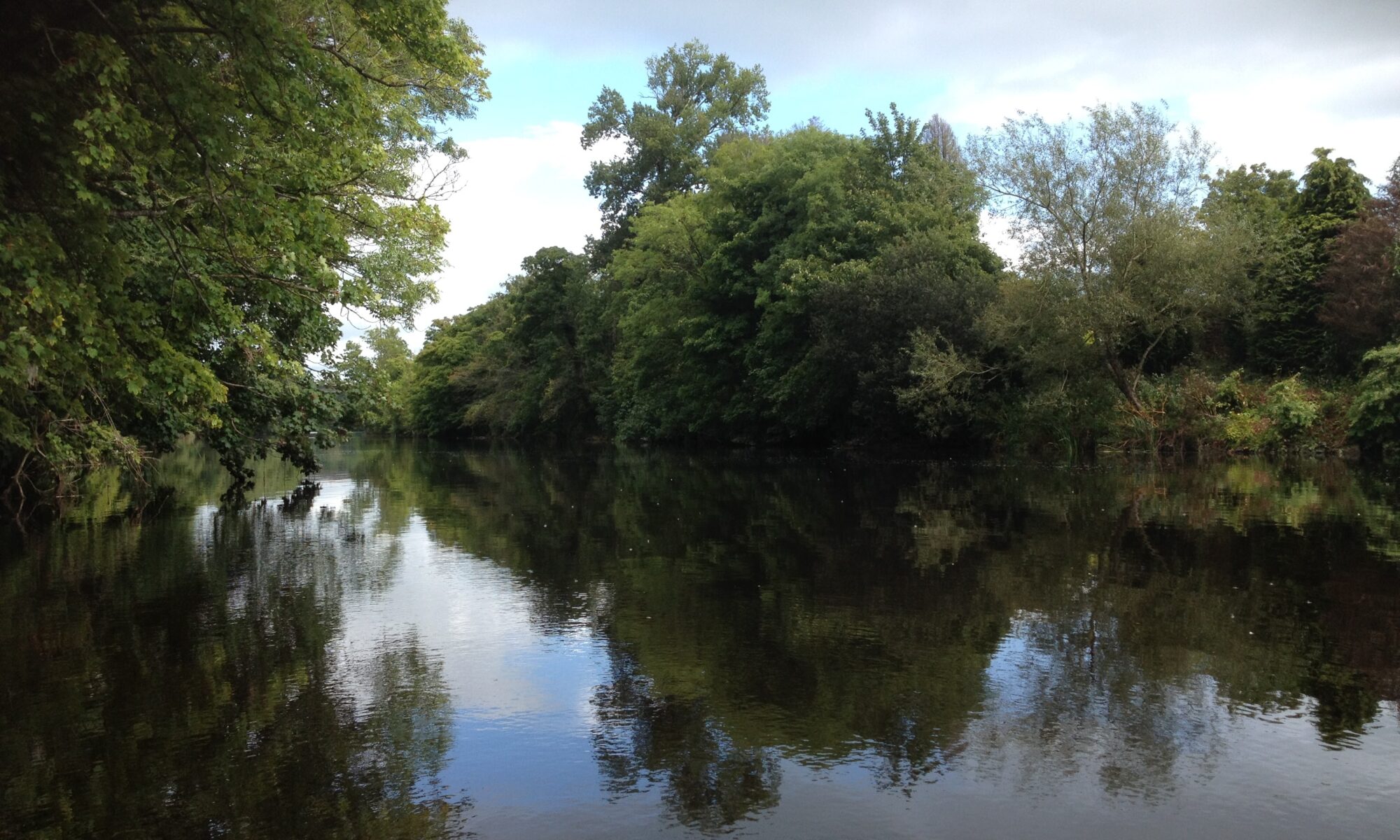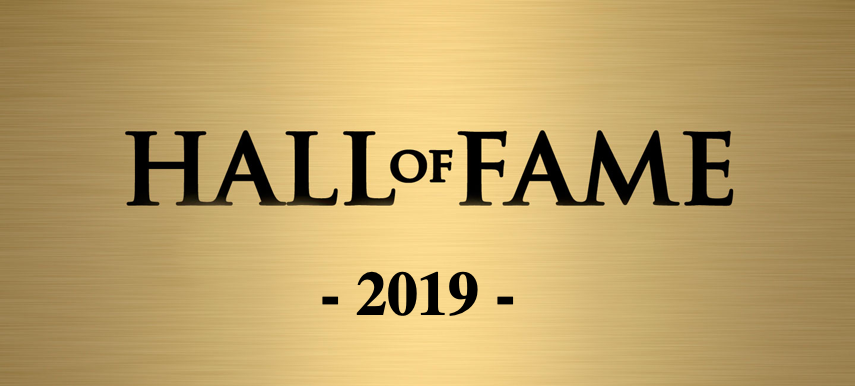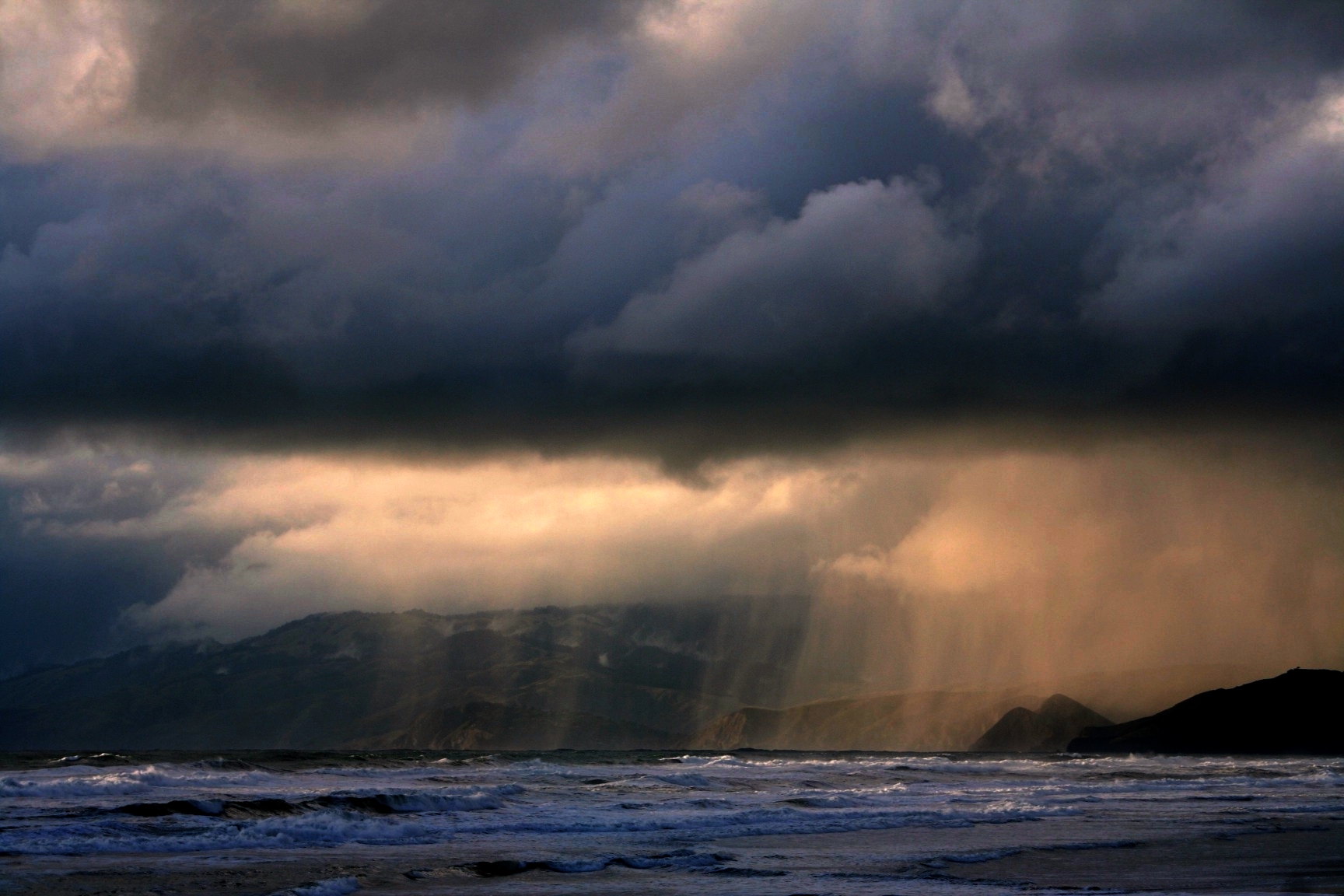What is the first image that comes to mind when you think of evolution? Possibly a line of cartoon primates marching, slouching monkeys at one end and naked men with spears at the other. Or a branching tree diagram where each twig represents an organism, maybe with a tentative “I think” scribbled above it. Alternatively, you may have pictured an illustration of related birds from isolated islands, each showing a dramatically different bill shape adapted to a different diet. Darwin’s Galápagos finches represent a foundational influence in terms of where we tend to look for signs of evolution and what we expect these signs to look like. Our new paper, just published Open Access in Zoologischer Anzeiger: A Journal of Comparative Zoology, provides a contrasting image. We looked at the Sulawesi babbler (Pellorneum celebense), a dull brown bird that spends its time hiding in bushes on less isolated islands in Indonesia, looking pretty similar from one island to the next. Nevertheless, we found that several of its populations are quite different from one another in mitochondrial DNA, in morphology, and in song.
Continue reading “Evolution in the understorey”Separating signal from noise in acoustic biodiversity surveys
We can now use acoustic recording equipment to monitor all the sounds produced in an ecosystem. By recording and listening back to sound in this way, we hope to capture useful information about nature. One way to do this is using ‘acoustic indices’, mathematical summaries of the acoustic information contained in audio recordings. But how reliably do such indices actually reflect the biodiversity many of us are trying to monitor and understand?
Continue reading “Separating signal from noise in acoustic biodiversity surveys”Shy birds hiding evolutionary insights: cryptic sexual dimorphism in the Sulawesi Babbler
The most iconic examples of sexual dimorphism are found in birds. Birds are probably many people’s introduction to this concept in the natural world, when brought to the park as a child and shown the difference between male and female mallards. But sexual dimorphism can be much more subtle than that kind of difference in colour (called dichromatism, and seen also in peacocks, pheasants, sparrows, and many more). Our new paper, just published by the Association for Tropical Biology and Conservation in their journal Biotropica, shows that sexual dimorphism can be missed in some birds even when it is important to their ecology and evolution.
Continue reading “Shy birds hiding evolutionary insights: cryptic sexual dimorphism in the Sulawesi Babbler”Boating in Ankobohobo, or The Importance of Bird Areas
Many of Earth’s plant and animal species are at imminent risk of extinction. But with the resources necessary to conserve them so sorely limited, where should efforts be focused? The term “ecological triage” has been coined for such decision-making, after the system invented by French army medics to sort patients by the urgency of their need. This borrowing of metaphor from the Napoleonic and World Wars is not accidental: in envisaging the damage done to nature by humanity, you are to think of cannonballs and scorched earth and mustard gas.
“Ecological triage” can focus attention onto the regions that hold a disproportionately large amount of diversity. Such “biodiversity hotspots” have become key to global conservation, from the Caribbean to Wallacea to New Zealand. But one country stands out as among the “hottest” of hotspots: the great island of Madagascar. I’ve written for EcoEvo before about the field season I spent there, which has just resulted in a new paper published in Scopus: Journal of East African Ornithology. The paper presents findings from a series of boat surveys in the threatened and irreplaceable Ankobohobo Wetland, home to some of the world’s rarest birds.
Header: African Darter (Anhinga rufa) in Ankobohobo, by Jamie Neaves.
Continue reading “Boating in Ankobohobo, or The Importance of Bird Areas”Disease dynamics and the impact of incompetent invaders
Invasive freshwater fish (Leuciscus leuciscus) acts as a sink for a parasite of native brown trout Salmo trutta (2020) Tierney et al. Biological Invasions. Read it here.
Adapted from blog published at Ecology for the Masses
Alien invasions and parasite infection
From house cats to cane toads, invasive species are one of the biggest threats to native plants and wildlife, second only to habitat destruction. An invasive species is a living organism that is a) introduced by humans from its native range to an area it doesn’t naturally occur, b) spreads and forms new populations and c) causes some kind of damage to the native ecosystem, economy or human health. Current lockdown conditions notwithstanding, introductions of invasive species have become increasingly common in our globalised world with easier travel and trade between countries. The spread of invasive species creates new ecological interactions between native and invasive species that can impact how our native ecosystems function, including disease dynamics. If the development and transmission of native parasites is different in invasive hosts compared to their usual native hosts, the parasite dynamics of the whole system can be altered.
Continue reading “Disease dynamics and the impact of incompetent invaders”The 2019 EcoEvo Hall of Fame
Every year, contributors to the blog look back on their favourite papers of the previous year and tell us what it was about these publications that stuck in their mind so much. With a range of different topics and reasons, it’s always great to see what each of us thinks makes for a great paper! Find out what we elected as our favourite papers in 2018 and 2017, and read on for this year’s entries:
Perrot-Minnot, M. J., Guyonnet, E., Bollache, L., & Lagrue, C. (2019). Differential patterns of definitive host use by two fish acanthocephalans occurring in sympatry: Pomphorhynchus laevis and Pomphorhynchus tereticollis. International Journal for Parasitology: Parasites and Wildlife, 8, 135-144.
Chosen by Paula Tierney
Read the full International Journal for Parasitology: Parasites and Wildlife paper here

Sometimes a paper doesn’t have to make huge waves in the broader ecology world to be a great paper and sometimes a paper comes along at just the right time to answer the questions you need answering. Perrot-Minnot et al. 2019 did both for me this year. Since the taxonomic revision of the acanthocephalan parasite Pomphorhychus laevis by Špakulová et al in 2011 resurrected the closely-related species Pomphorhynchus tereticollis, the systematics of the genus in Europe has been something of a taxonomic dumpster fire. It also left one of my PhD chapters with a bit of an identity crisis since,
Continue reading “The 2019 EcoEvo Hall of Fame”Looking beyond mean trends of environmental change
During my first week in Dublin, Ireland, I was more shocked by the countless sunny-rainy shifts within one single day than its natural beauty, although I had been warned of its fickle weather in advance. That was something totally new to me. Born and raised in a small inland town in North China, I had grown accustomed to taking for granted that a whole sunny day could be prophesised by bright morning sunlight through the window. Then I started to imagine that, if fitting a curve to the weather, the curve of my birth village would surely be much smoother than Dublin, even though the former has four much more distinct seasons. But, at that moment, I had neither realized that this thought actually reflected the difference in the temporal autocorrelation of environmental conditions in the two places nor how this could be linked to the dynamics and stability of ecosystems.
Read Marvin’s full post on the Nature Ecology & Evolution blog.
This post is based on the paper Yang et al. (2019) ‘The predictability of ecological stability in a noisy world.’ Nature Ecology & Evolution
Header photo by Brocken Inaglory on Wikimedia Commons (CC BY-SA 3.0)

